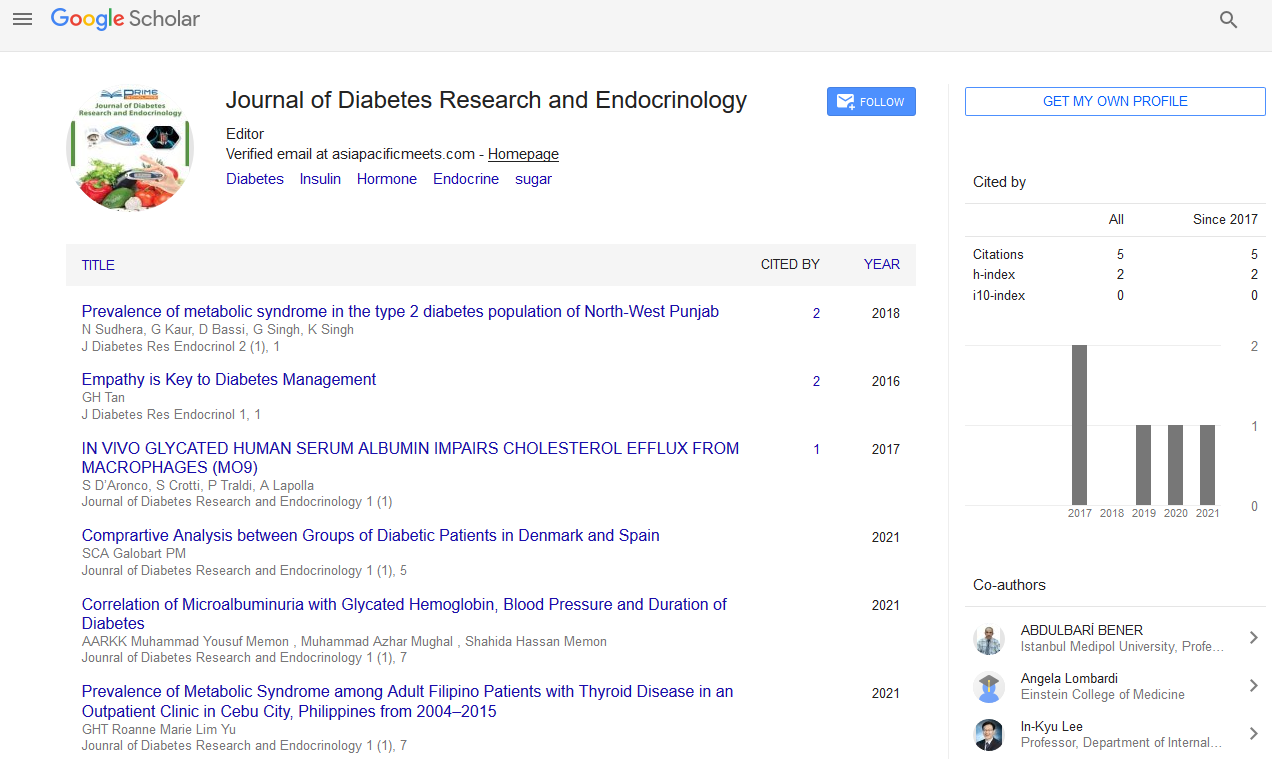Commentary - (2023) Volume 7, Issue 1
Diffusion Tensor Imaging is being Developed for the Purpose of Studying
Diseases
Gregory C Ravizzin*
Department of Radiology and Nuclear Medicine, Trondheim University Hospital, Norway
*Correspondence:
Gregory C Ravizzin,
Department of Radiology and Nuclear Medicine, Trondheim University Hospital,
Norway,
Email:
Received: 01-Mar-2023, Manuscript No. IPJDRE-23-16296;
Editor assigned: 03-Mar-2023, Pre QC No. IPJDRE-23-16296 (PQ);
Reviewed: 17-Mar-2023, QC No. IPJDRE-23-16296;
Revised: 22-Mar-2023, Manuscript No. IPJDRE-23-16296 (R);
Published:
29-Mar-2023, DOI: 10.36648/ipjdre.7.1.09
Description
The random Brownian motion of water molecules within a
tissue voxel is the basis for diffusion-weighted imaging DWI, a
type of MR imaging. To put it more succinctly, tissues that are
swollen or have a lot of cells have lower diffusion coefficients.
Diffusion is beneficial for both tumour characterization and cerebral
ischemia. Additionally, there is confusion regarding how
to refer to strange confined dispersion. This is largely attributable
to the initial popularity of DWI in stroke, which implied
that the rest of the brain did not exhibit restricted diffusion
because it described restricted diffusion and showed infarcted
tissue as having high signal on isotropic maps. Sadly, this abbreviation
is more widely used and appealing than the more
precise diffusion, whose awkward diffusion reveals greater
restriction than one would anticipate for this tissue. To make
matters even worse, a lot of people are unaware of T2 shinethrough,
which is the cause of the false high signal on isotropic
maps. In addition, they perceive it as a binary feature in which
the T2 contribution to the signal is either present or absent,
despite the fact that there is always a T2 component, even in
regions with genuine T2 diffusion restriction. Diffusion-weighted
images are extremely helpful in the diagnosis of brain vascular
strokes. Diffusion tensor imaging is being developed for
the purpose of studying diseases that affect the white matter
of the brain and other body tissues. DWI is most valuable in tissues
where isotropic water development overwhelms, like dark
matter in the cerebral cortex and significant cerebrum cores
or in the body, where the dispersion rate gives off an impression
of being the equivalent when estimated along any pivot.
T1 and T2 relaxation, on the other hand, continue to have an impact on DWI. Quantitative measurements of the dispersion
coefficient or, more specifically, the very obvious dispersion
coefficient ADC can be used to capture dissemination and unwinding
effects on image contrast. The ADC concept was introduced
in order to take into account the intricate nature of the
diffusion process in biological tissues, which reflects a variety
of distinct mechanisms. For instance, the underlying whirling
of colour dropped into water is not a sign of dispersion; rather,
it is primarily the result of gravitational forces and thermally
and precisely triggered convection flows. When the dye is more
evenly distributed and the initial currents have diminished, diffusion
takes over in later stages. For a better demonstration of
pure diffusion, place the dye on an agar plate without convection
currents. Here, the dye droplets appear to disperse in a
symmetrical manner over time, gradually increasing in size and
colour. Diseases can either increase or decrease water diffusion
in tissues. The diffusion times of many chronic and non-acute
diseases are lengthy. To some degree hurt tissues contain verification
of cell obliteration, including upset cytoarchitecture,
defilement, or microcystic degeneration. Extracellular spaces
become more “water-like” in these damaged tissues. For similar
reasons, they frequently display the heights of their T1 and
T2 times in addition to drawing out dispersion coefficients.
Acknowledgement
None
Conflict of Interest
The authors declare that they have no conflict of interest.
Citation: Ravizzin GC (2023) Diffusion Tensor Imaging is being Developed for the Purpose of Studying Diseases. J Diab Res Endocrinol.
7:09.
Copyright: © 2023 Ravizzin GC. This is an open-access article distributed under the terms of the Creative Commons Attribution
License, which permits unrestricted use, distribution, and reproduction in any medium, provided the original author and source
are credited.

